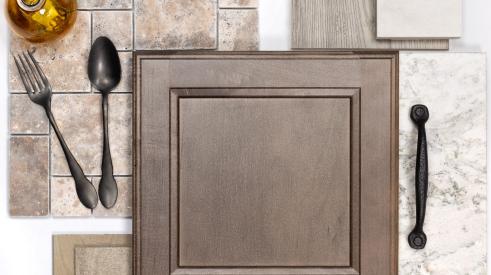Home-price growth continued to moderate in many metropolitan areas in the second quarter and national year-over-year price appreciation is now at its slowest pace since 2012, according to the latest quarterly report by the National Association of Realtors.
The median existing single-family home price increased in 71 percent of measured markets, with 122 out of 173 metropolitan statistical areas (MSAs) showing gains based on closings in the second quarter compared with the second quarter of 2013. Forty-seven areas (27 percent) recorded lower median prices from a year earlier.
There were fewer rising markets in the second quarter compared to the first quarter, when price increases were recorded in 74 percent of metro areas. Furthermore, 19 areas in the second quarter (11 percent) had double-digit increases, a sharp decrease from the 37 areas last quarter and the overall average of 43 areas since the second quarter of 2013.
Lawrence Yun, NAR chief economist, says price increases are balancing out to the benefit for both buyers and sellers. “National median home prices began their most recent rise during the first quarter of 2012 but had climbed to unsustainable levels given the current pace of inflation and wage growth,” he said. “At this slower but healthier rate, homeowners can continue steadily building equity. Meanwhile, for buyers, increased supply with moderate price gains is giving them better opportunities to choose.”
The national median existing single-family home price in the second quarter was $212,400, up 4.4 percent from the second quarter of 2013 ($203,400). The median price during the first quarter of 2014 rose 8.3 percent from a year earlier.
Yun adds that despite the stabilization in price growth, sharp increases still exist in some markets and are impacting sales, notably on the West Coast where inventory shortages are more prevalent. “New construction for ownership housing and rentals is needed to alleviate price and rent pressures and accommodate their growing populations,” he said.
Total existing-home sales, including single-family and condo, increased 5.8 percent to a seasonally adjusted annual rate of 4.87 million in the second quarter from 4.60 million in the first quarter, but are 4.5 percent below the 5.10 million pace during the second quarter of 2013.
Distressed homes--foreclosures and short sales generally sold at discount--accounted for 12 percent of second quarter sales, down from 17 percent a year ago. “Fewer distressed sales will help diminish appraisal problems,” adds Yun.
According to Freddie Mac, the national average commitment rate on a 30-year conventional fixed-rate mortgage fell each month during the second quarter to an overall average rate of 4.23 percent, down from 4.36 percent during the first quarter of the year. They were 3.70 percent in the second quarter of 2013.
Lower interest rates and a slight rise (0.7 percent) in the national family median income ($64,751) led to improved buying power in a majority of metro areas during the second quarter. To purchase a single-family home at the national median price, a buyer making a 5 percent downpayment would need an income of $47,816, a 10 percent downpayment would require an income of $45,299, and $40,266 would be needed for a 20 percent downpayment.
Total housing inventory showed much-needed improvement at the end of the second quarter at 2.30 million existing homes available for sale, which is 6.5 percent higher than a year ago. The average supply during the quarter was 5.6 months; it was 5.1 months in the second quarter of 2013. A supply of 6 to 7 months represents a rough balance between buyers and sellers.
NAR President Steve Brown, co-owner of Irongate, Inc., Realtors in Dayton, Ohio, says even with the increase in supply, Realtors across the country are reporting that properties are selling faster than earlier in the year. “The improving economy and lower interest rates are increasing the pool of interested buyers,” he said. “On the contrary, competition remains tight and all-cash offers are still a common occurrence. This inevitably is causing hesitation for some first-time buyers, who are more likely to have lower downpayments and need to secure financing amidst tight credit conditions.”
Metro area condominium and cooperative prices--covering changes in 62 metro areas--showed the national median existing-condo price was $211,100 in the second quarter, up 5.9 percent from the second quarter of 2013 ($199,300). Forty-seven metro areas (76 percent) showed increases in their median condo price from a year ago; 15 areas had declines.
The five most expensive housing markets in the second quarter were the San Jose, Calif., metro area, where the median existing single-family price was $899,500; San Francisco, $769,600; Anaheim-Santa Ana, Calif., $691,900; Honolulu, $678,500; and San Diego, $504,200.
The five lowest-cost metro areas in the second quarter were Youngstown-Warren-Boardman, Ohio, where the median single-family home price was $78,600; Rockford, Ill., $85,300; Elmira, N.Y., $87,800; Decatur, Ill., $90,900; and Toledo, Ohio, $95,900. PR
Regionally, total existing-home sales in the Northeast rose 5.1 percent in the second quarter but are 4.1 percent below the second quarter of 2013. The median existing single-family home price in the Northeast was $255,500 in the second quarter, down slightly (0.9 percent) from a year ago.
In the Midwest, existing-home sales increased 9.4 percent in the second quarter but remain 6.1 percent below a year ago. The median existing single-family home price in the Midwest increased 4.4 percent to $167,600 in the second quarter from the same quarter a year ago.
Existing-home sales in the South climbed 3.4 percent in the second quarter but are 1.0 percent below the second quarter of 2013. The median existing single-family home price in the South was $187,300 in the second quarter, 3.7 percent above a year earlier.
In the West, existing-home sales rose 7.1 percent in the second quarter but remain 9.0 percent below a year ago. The median existing single-family home price in the West jumped 7.3 percent to $297,400 in the second quarter from the second quarter of a year ago.
The National Association of Realtors®, “The Voice for Real Estate,” is America’s largest trade association, representing 1 million members involved in all aspects of the residential and commercial real estate industries.
Related Stories
3 Areas Successful Remodelers Focus On
Industry advisor Mark Richardson shares what separates the losing from the winning in today’s market
Peppermill Finish
10 Different Questions You Should Ask Potential Clients
Mark Richardson says you need to rethink the questions you ask potential clients and the way in which you ask them
Pro Remodeler’s 2024 Pinnacle Experience Reaches New Heights
The sold-out event covered leadership, lead gen, sales, and technology
Brian Gottlieb Receives Remodeling Mastery Award
Presented by industry icon, Mark Richardson, the award celebrated Gottlieb’s extraordinary impact on remodeling
5 Counterintuitive Strategies to Improve Your Business
Follow these strategies to inspire employees, instill trust, and beat the competition
10 Remodeling Sales Techniques for 2024
Mark Richardson explains the benefits of visual selling, strategic questioning, intentional messaging, and more on this episode of Remodeling Mastery
3 Ways to Start and Operate a Successful Handyman Division
So, you want to start a small projects division? Three successful remodelers lay out their winning approaches and hard-learned lessons
6 Results-Proven Marketing and Sales Tips for Contractors
The Pinnacle Experience’s keynote speaker, author of "They Ask, You Answer" offers results-driven tips contractors can start today for improved leads
How to Get More Leads with a Stronger Remodeling Brand
Discover how to build a strong brand for your construction company, and learn key strategies to differentiate and attract better leads













